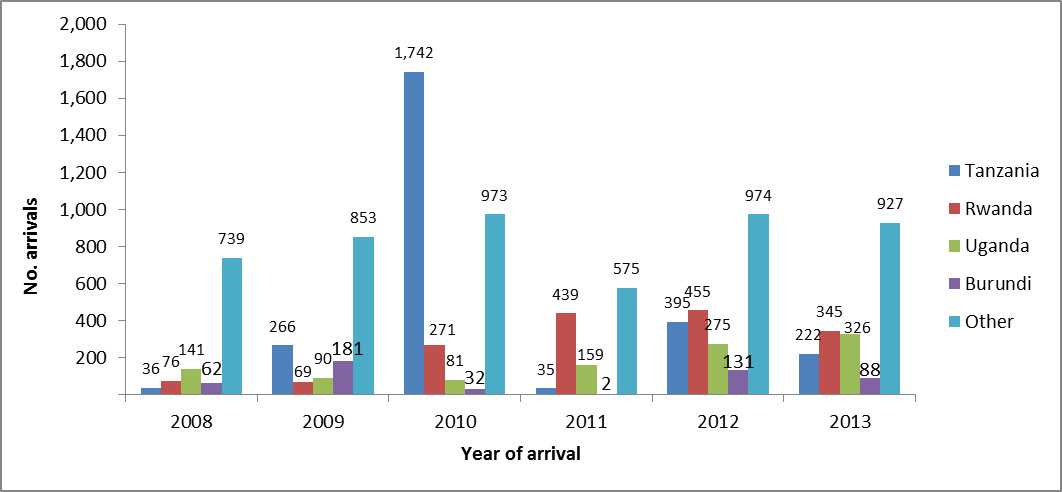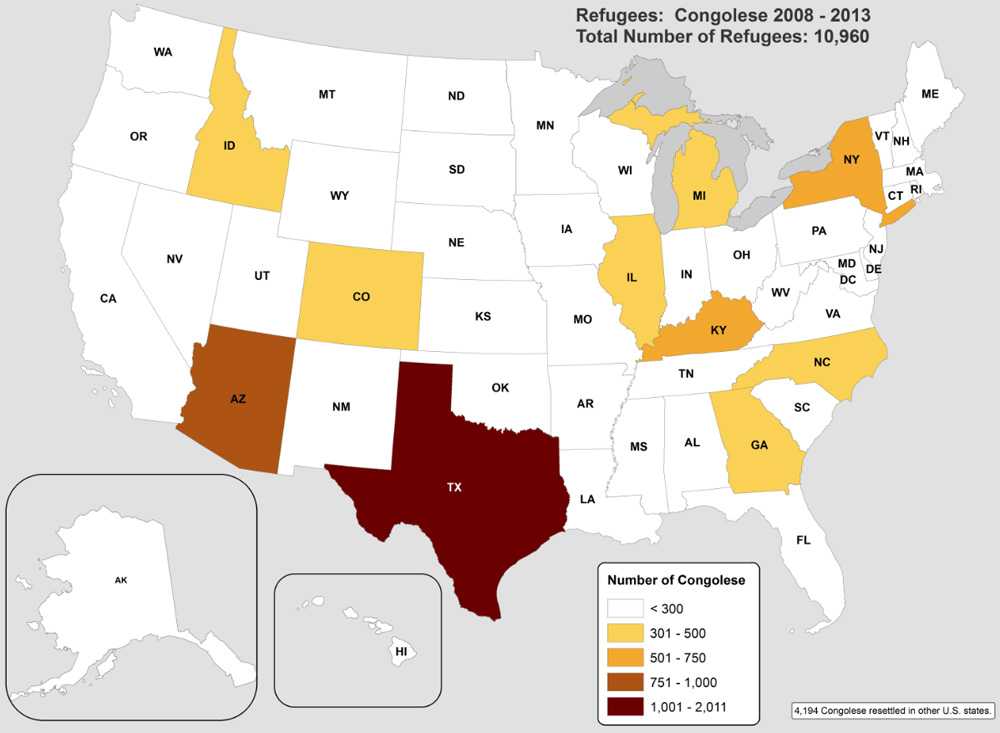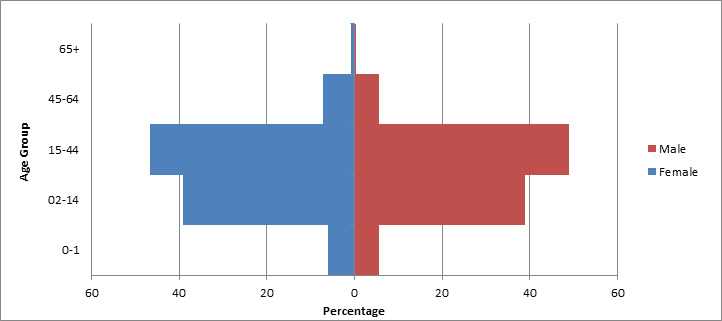Population Movements
Congolese Refugee Health Profile
Movement Out of DRC to Burundi, Rwanda, Tanzania, and Uganda
Since January 2013, UNHCR reports that more than 400,000 Congolese nationals have sought refuge outside of DRC 4. Although Congolese refugees reside in many different countries in sub-Saharan Africa, the 4 primary host countries providing asylum to Congolese refugees are Uganda (113,000), Rwanda (68,000), Tanzania (59,000), and Burundi (38,000) 4. There are several large refugee camps or settlement areas within each host country, with Nakivale (Uganda) and Nyarugusu (Tanzania) holding the largest number of Congolese refugees in the “Great Lakes” region of central/eastern Africa (Figure 2). The majority of Congolese refugees from DRC live in camp-based settings; however, a growing number in Rwanda and Uganda are now living in settlements in urban settings as encampment policies are lifted and host governments are allowing more refugees to move freely within the country. For example, Uganda has experienced a fivefold increase in the number of refugees living in Kampala from 2007–2013, with 48,000 Congolese now living in Uganda’s capital city. In the beginning of 2012, an escalation of conflict in the Kivu region of DRC resulted in almost 70,000 new refugee arrivals into camps in Burundi, Rwanda, and Uganda. As fighting continues, the numbers are expected to grow.
Figure 2. Location and size of major refugee populations in Burundi, Rwanda, Tanzania, and Uganda, 2013*

* Refugee population numbers include refugees from multiple countries, not exclusively DRC. Some locations are refugee camps and others are urban refugee populations.
Resettlement of Congolese Refugees in the United States
In 2000, the USRAP began resettling small numbers of Congolese refugees in the United States, with the largest caseloads coming from Tanzania 5. From 2008–2013, approximately 11,000 Congolese refugees arrived in the United States from 36 countries (Figure 3). Refugees have been resettled in multiple states, with Texas, Arizona, Kentucky, and New York each receiving ≥6% of total arrivals (Figure 4). However, once refugees arrive in a state, they are free to relocate elsewhere, and secondary migration to join an already established Congolese community is common. Most (55%) Congolese refugees who resettled in the United States during this period were young adults aged 15–44 years and 40% were children under 15 years old (Figure 5). Because of the long history of violence in DRC and the recent escalation of conflict in the Kivu region, durable solutions such as repatriation do not appear likely for Congolese refugees anytime in the near future. In 2012, the US Bureau of Population, Refugees, and Migration (PRM) announced a new initiative to resettle approximately 50,000 Congolese refugees in the United States over the next 5 years (2013–2018).
Figure 3: Congolese refugee arrivals in the US, 2008–2013 (n=10,960)

Figure 4: Top 10 US states of primary resettlement for Congolese refugees, 2008–2013 (N=10,960)

* The remaining 4,194 Congolese refugees were resettled in other states.
Figure 5: Age distribution for Congolese refugees originating from refugee camps in Burundi, Rwanda, Tanzania, and Uganda, 2008–2012 (N=4,938)

References
- United Nations High Commissioner for Refugees Country Profile – Democratic Republic of Congo. http://www.unhcr.org/pages/49e45c366.html [cited Oct 2013].
- Office of Refugee Resettlement: Overseas Refugee Arrival Data. Available at: http://www.acf.hhs.gov/programs/orr/resource/refugee-arrival-data [cited Dec 2013].
- Page last reviewed: August 29, 2014
- Page last updated: August 29, 2014
- Content source:


 ShareCompartir
ShareCompartir